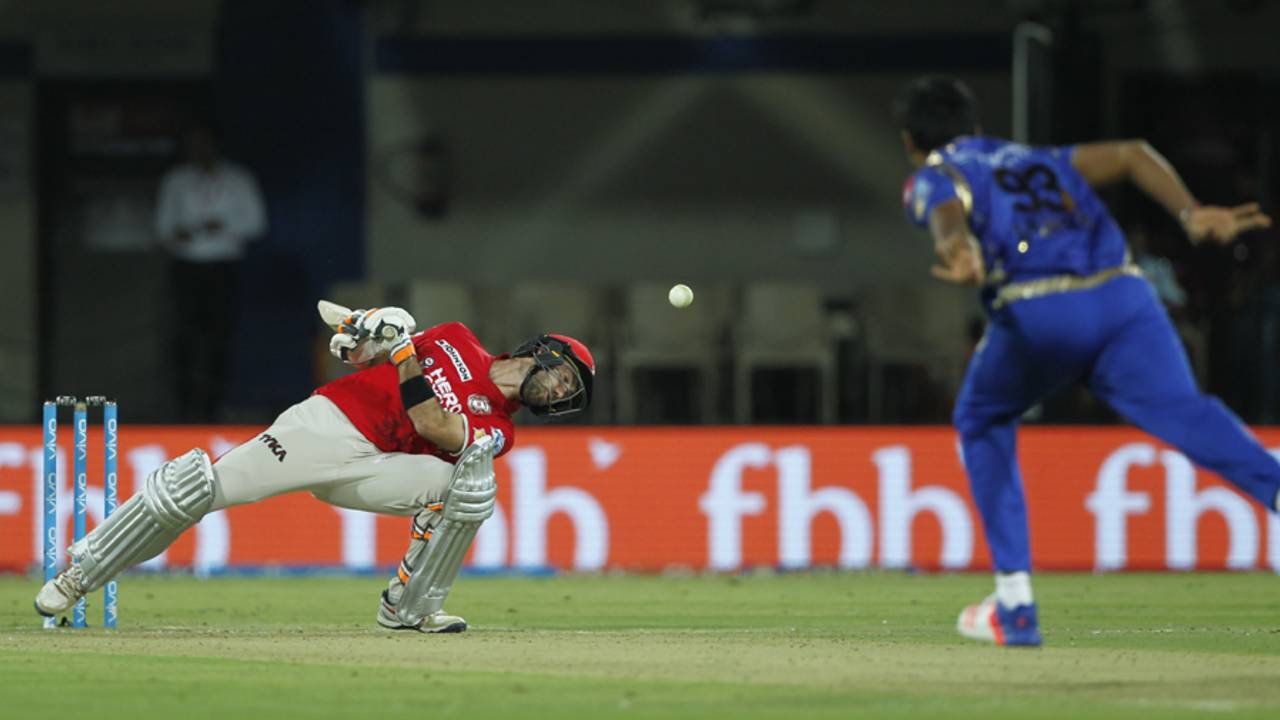Sanju Samson has a love-hate relationship with the short ball. He scores quickly when fast bowlers go short at him, but he's also likely to get dismissed in the process.
Since the start of IPL 2018 and before
Tuesday's game against the Mumbai Indians, Samson had scored 53 off 22 balls from fast bowlers that ESPNcricinfo's scorers had logged as "short". That's a strike rate of 240.90. He hadn't scored quicker against any other length. But four of those 22 short balls had also led to his dismissal, giving him an average of 13.25 - lower than his average against any other length.
The Mumbai Indians would have known all this, and would probably have more sophisticated data than ESPNcricinfo's numbers to back up their knowledge. They would have known to attack him early with short balls.
But knowing is one thing. Bowling the perfect short ball is another.
Trent Boult did just that on Tuesday night: left-arm over, slanting across Samson, pounding the pitch hard, climbing towards the batsman's right shoulder, still rising when ball met bat. Samson shouldn't have tried to pull it, perhaps, but instinct is instinct. He met it with bat face pointing almost skywards, and the ball ballooned gently to mid-on.
Samson c Rohit Sharma b Boult 0.
This was the high point of a Mumbai performance that emphasised just how much their fast bowlers own the shorter lengths in the IPL. Nine of the ten wickets Mumbai took went to their seamers - calling Kieron Pollard a "fast bowler" would stretch the definition too far - and six of those nine wickets went to balls pitching short or short of a good length.
This is T20, and most dismissals don't have a grand plan behind them - you can't plan for Steven Smith, for instance, to be dismissed hoicking across the line for the third time in a row - but Mumbai's use of the shorter lengths against the Royals was part of a larger pattern. No team in the IPL does it as well as them.
This season alone, Mumbai have enjoyed success by going short and aggressive - like the Samson delivery, or the one from
James Pattinson against the Kolkata Knight Riders that chalked up another victory for bouncers against Sunil Narine - as well as with slower bouncers, like those that uprooted Sunrisers Hyderabad's top order in Sharjah. They've bowled short balls at the batsman's body, and they've bowled them wide outside off stump to make them reach out and lose their shape. They've used short balls to attack, and they've used them to defend by forcing batsmen to take singles to deep fielders patrolling the long boundaries.
It's nothing new. Since the start of the 2018 season, Mumbai's fast bowlers have bowled more short and short-of-good-length balls than those of any other team, and bowled those balls better than any other team, taking the most wickets and achieving the best average and economy rate.
It's always been part of their wider strategy. Mumbai play their home games at the Wankhede Stadium, which offers more pace and bounce than the average Indian pitch in the IPL, and their best squads have always included fast bowlers who can use short balls effectively. The defining image of Mumbai's bowling attacks over the years might be
Lasith Malinga's yorker or
Jasprit Bumrah's yorker, but their fourth-highest wicket-taker of all time is the persistently short
Mitchell McClenaghan.
McClenaghan, now in his sixth season with Mumbai, hasn't got a game yet in IPL 2020 because he's in the back of their fast-bowling queue behind Boult, Bumrah and Pattinson, who could form a tasty Test-match pace attack, and probably also behind Nathan Coulter-Nile, who also favours the hard lengths.
It's an attack built for the Wankhede, but it wasn't clear before this season began whether it would suit the pitches in the UAE. The team management probably saw enough upon their arrival in the country to pick Pattinson, rather than a spinner, as Malinga's replacement when he opted out for personal reasons, and conditions - at least in the first half of the tournament - have definitely given the fast bowlers something to work with.
Mumbai have exploited those conditions better than most other teams so far, with their fast bowlers picking up 32 wickets in six matches, with a best-in-the-league collective average and economy rate. The Delhi Capitals, who have Kagiso Rabada and Anrich Nortje leading their pace attack, are the only comparable team across those measures.
Mumbai and the Capitals occupy the top two spots on the IPL table currently, and own the two best net run rates too. It can't just be a coincidence.
Karthik Krishnaswamy is a senior sub-editor at ESPNcricinfo


